It’s unfortunate that “Jack of all trades” is so often followed by “master of none.” It is possible to do a number of things quite well, and versatility is often of more value than virtuosity. The new Southwester Dory from Chesapeake Light Craft (CLC) was designed to serve not only as a sailboat and a rowboat, but also as a motor launch, and it does well in all three capacities. Its predecessor is CLC’s Northeaster Dory, a boat that proved popular among the sail-and-oar crowd, but many prospective buyers asked about adding outboard power. Designer John Harris wisely left his Northeaster as it was and drew up a slightly larger boat that could accommodate a small motor.The narrow, raked transom isn’t meant to support an outboard, and the slender sections aft won’t support the weight of someone at the motor’s tiller, so John situated the Southwester’s motorwell just aft of amidships. The centralized well, an optional module that can be installed at any time during or after construction of the boat, allows comfortable seating and makes it easy to get to the motor’s fuel cock, steering friction screw, tilt lock, and fuel-tank cap without having to hang overboard. It brings the motor’s noise into the middle of the boat, but in a small boat, there’s no escaping it anyway.The well is long enough to allow the motor to kick up when it hits something or isn’t in use—a real advantage over a short well that requires removing the motor and stowing it elsewhere to transition to rowing or sailing, coming ashore, or coasting over shoals. While leaving the motor lowered creates a lot of drag, so does the motor well opening. So the Southwester has two inserts to fill the open slot, one notched to fit around the motor when it is in use, and the other to fill the entire slot. Toggles hold the plywood inserts in place.
Join The Conversation
We welcome your comments about this article. To include a photo with your remarks, click Choose File below the Comment box.
Comments (4)
Comments are closed.

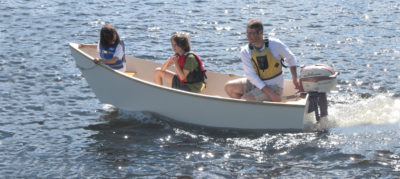
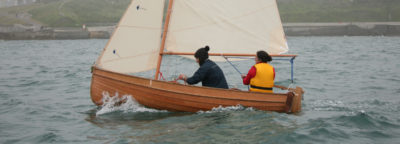
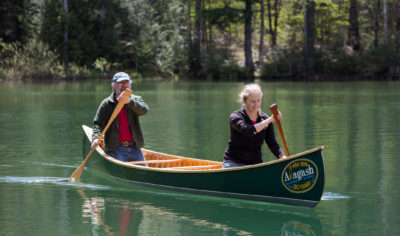
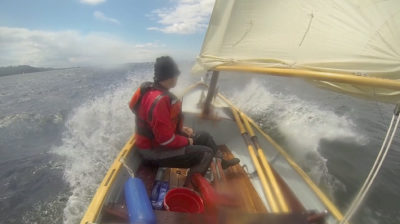
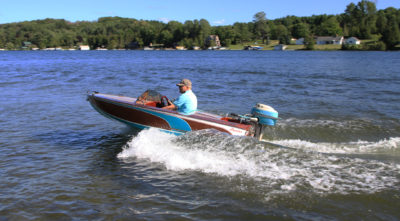
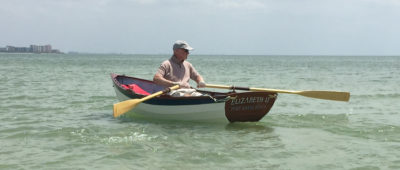
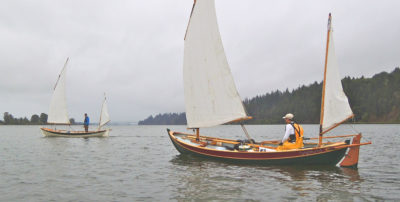
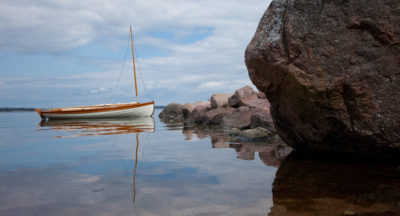
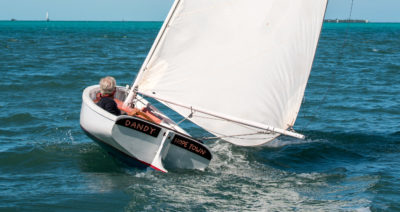

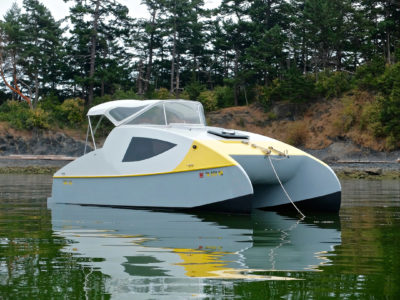

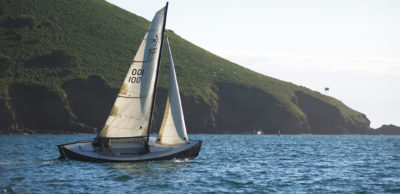
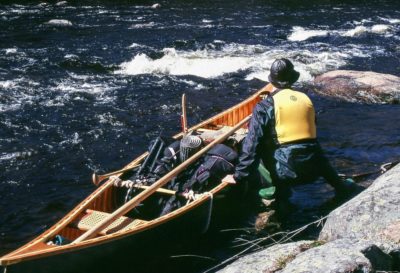

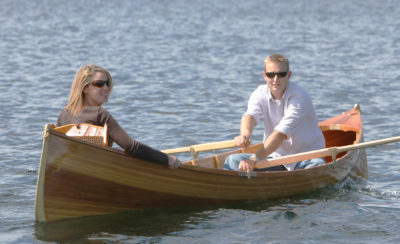
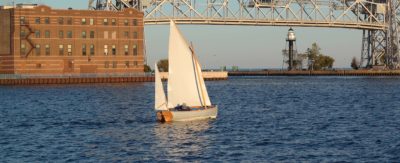

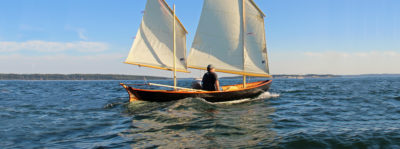
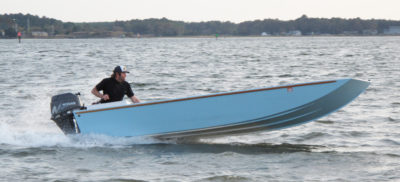
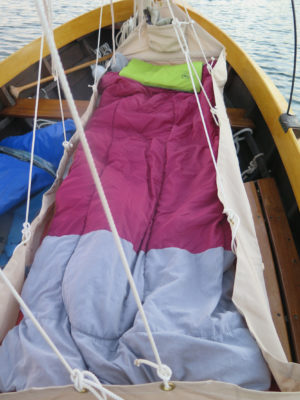
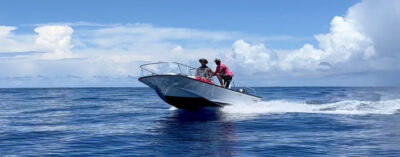
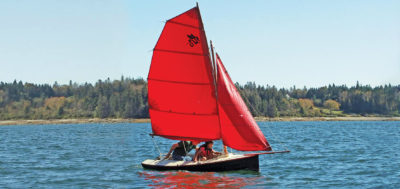
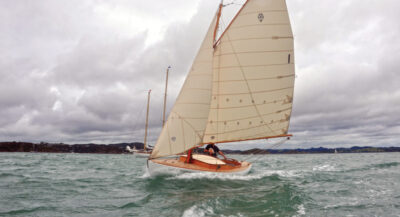
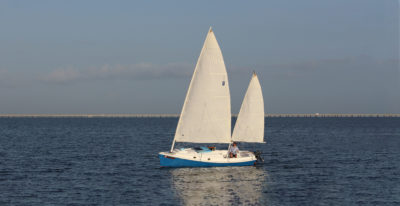
Some interesting details in this boat, and some questions.
I like the rudder; I have used a big bolt into an aircraft nut for a decade now on RAN TAN, set just hard enough to keep things from coming up unless the rudder blade hits something.
I don’t understand why more people in the Norwegian tiller trade don’t do it like they do. There is a mortise in the rudder head; the yoke has a tenon that goes through the rudder head with a little wooden wedge to hold it. If the tenon is round the tiller, yoke joint can be a bolt, does not have to be a universal joint.
And the Norwegians have no problem dealing with long oars or spars. They let them stick out over the stem like a bowsprit. Things are nicely out of the way. You may want a couple of bits of line to hold things in place.
I really like the balanced lug main and mizzen. I am curious though as the CE seems to be well aft of the CLR. Does the boat produce weather helm when going to windward.
I didn’t notice a strong weather helm while I was sailing the Southwester. The rudder would appear to take some of the lateral resistance load; the longish transverse tiller may lighten the feel of any weather helm. Several of the photos taken that afternoon show the main and mizzen set parallel to one another and yet I never felt I needed to loosen the mizzen sheet to better balance the rig.
I switched to a pole-tiller to get around the mizzen mast on my outrigger canoe. After my brain wrapped around it, I would not do anything else for a small boat with skinny stern. I used two yokes, the first about 14 inches, the second about 20 inches. The longer one, per the law of levers, nicely reduces arm stress and slows the steering rate enough to let you recover from brain-glitch errors.